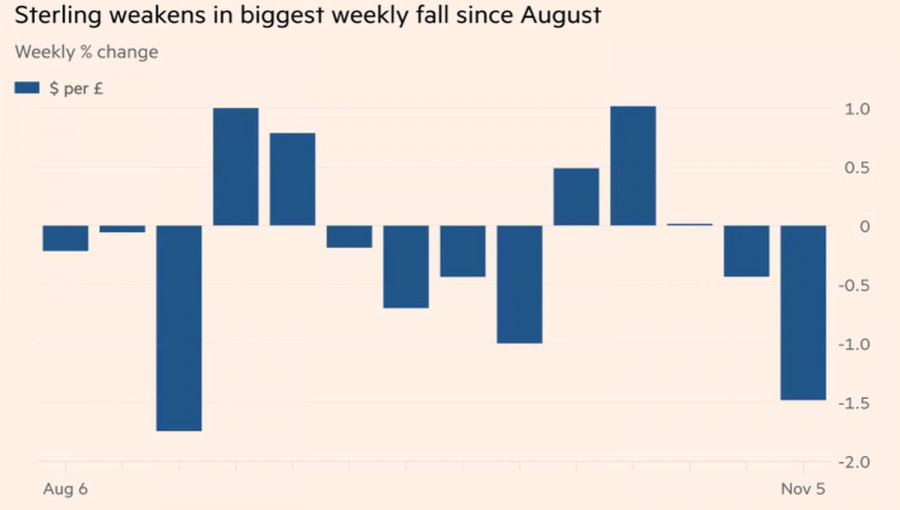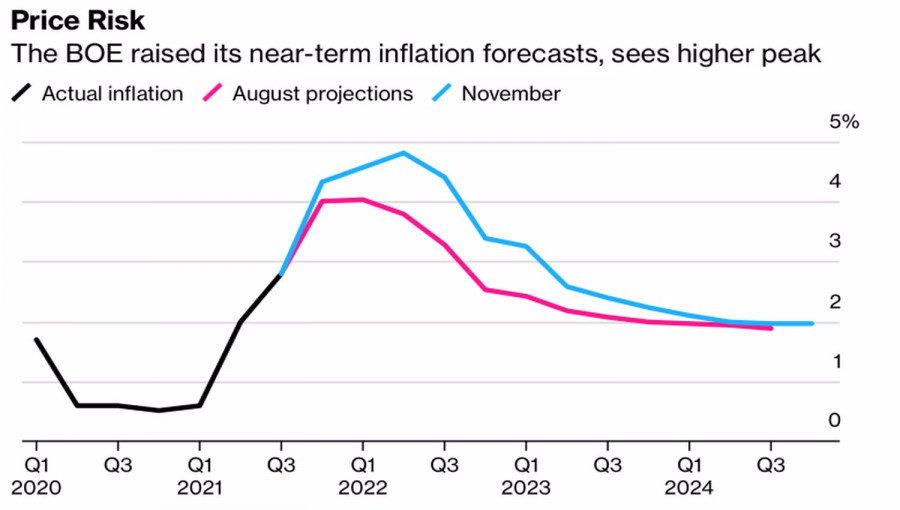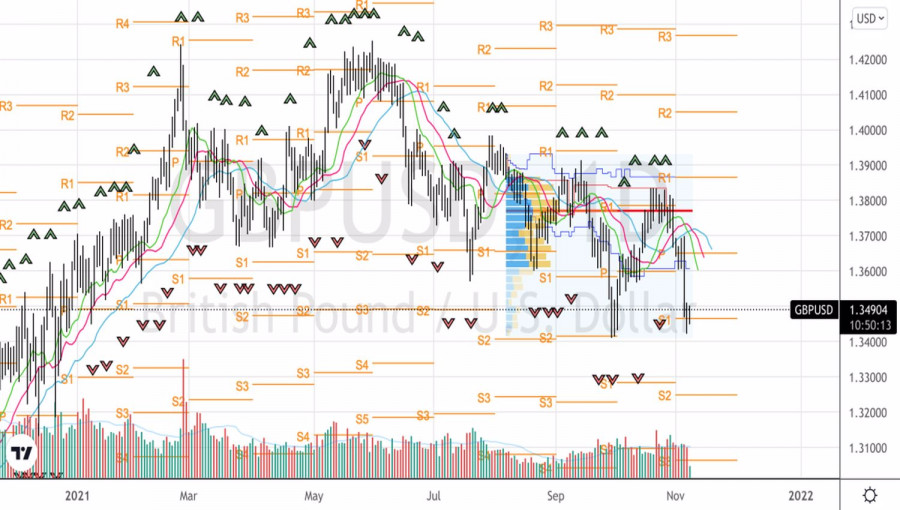The decision of the Bank of England to keep the repo rate at 0.1% at the November meeting of the Monetary Policy Committee was a real shock not only for Britain but also for global financial markets. Britain's 2-year bond yields fell by half, the worst collapse since the start of the pandemic; the pound posted the worst daily results in a year and weekly results since August. Investors were confident in a 15 basis points increase in borrowing costs, but they never saw it.
Pound weekly dynamics

Broken illusions about a rate hike, a slowdown in the economy, and a resuscitation of the Brexit theme have made the pound a whipping boy. London is considering using a safeguard mechanism, in particular Article 16 of the treaty with the EU, to renegotiate controversial trade agreements in Northern Ireland, which could provoke a new scandal with Brussels.
According to the forecasts of Bloomberg experts, Britain's economy will slow down significantly in the third quarter - from 5.5% to 1.5%. As a result, GDP will remain 1.8% lower than before the pandemic, compared to -0.5% in the eurozone. Full economic recovery is expected in the first quarter, which is slightly later than the Bank of England had previously predicted.
Raising the repo rate in such conditions looks almost like a gamble, but BoE would take this step if it had complete information about the state of the labor market, which will be available in mid-November. Governor Andrew Bailey said the only reason the central bank refrained from tightening monetary policy is the lack of labor market data.
Bank of England Chief economist Huw Pill said basic wages in the currency bloc and the United States are rising at pre-pandemic levels, while those in Britain are already surpassing them. The BoE would not like to allow an inflationary spiral to develop.
Pill believes that the growth rate of consumer prices in the country may exceed not only Europe but also the U.S., which makes it possible to understand why BoE will raise rates before the Fed and the ECB.
Bank of England inflation forecasts

Thus, the regulator does not seem to be going to abandon the idea of starting a cycle of monetary restriction. Moreover, before the December meeting of the MPC, they will have not one, but two reports on the state of the labor market in Britain. By fueling interest in their future decisions with hawkish rhetoric, they influence inflationary expectations.
The weakness of the pound was superimposed on the strong position of the US dollar, which forced the GBPUSD pair to return to the 6-week bottom area. The statistics on American employment turned out to be stronger than forecast, while the further acceleration of inflation to 5.8%, as Bloomberg experts expect, will fuel demand for the dollar.
Technically, a rebound from the important pivot point at 1.346 with the subsequent formation of a pin bar on the GBPUSD daily chart increases the risks of a pullback. It makes sense to close the shorts formed on the rebound from the resistance at 1.375, fixing the profit. In the future, we will use unsuccessful storms of dynamic resistance in the form of moving averages to sell the pound against the U.S. dollar.
GBPUSD, Daily chart

